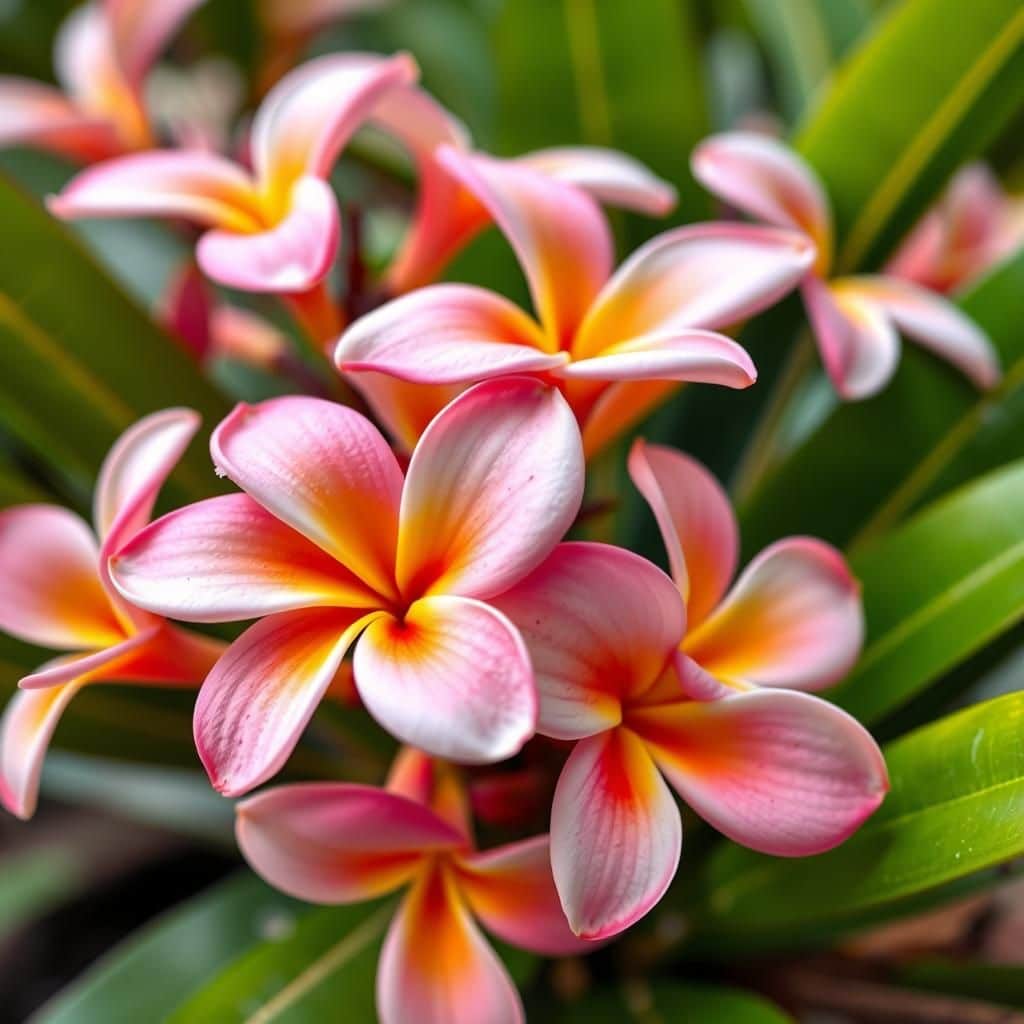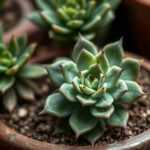The Ultimate Guide to Finding the Best Potting Mix for Frangipani

Frangipani, renowned for its fragrant blooms and tropical allure, requires the right potting mix to thrive in containers. Selecting the ideal potting mix is crucial for ensuring healthy growth, vibrant flowers, and a strong root system. This ultimate guide will walk you through the essential components of a high-quality potting mix specifically tailored for frangipani plants. From understanding the importance of drainage and aeration to exploring the benefits of organic additives, we will equip you with the knowledge needed to create the perfect environment for your frangipani. Discover the secrets to nurturing these stunning plants and enjoy their beauty for years to come.
Choosing the Best Potting Mix for Frangipani
When selecting the best potting mix for frangipani, it is essential to prioritize a blend that promotes excellent drainage and aeration, as these aspects are critical for the plant's relative susceptibility to root rot. A quality mix typically combines components such as coconut coir, perlite, and pine bark to create a light yet rich substrate that retains just enough moisture without becoming waterlogged. Adding slow-release fertilizers can also enhance the mix, supplying the necessary nutrients as the plant grows. Overall, look for a potting mix specifically designed for tropical plants or succulents, as these will often correspond to the soil conditions frangipani thrives in.
Key Ingredients for Potting Mix
The ideal potting mix for frangipani includes key ingredients like coconut coir, which retains moisture while providing aeration, and perlite for improved drainage. Additionally, incorporating pine bark contributes to the structure and texture that help prevent soil compaction. These components are vital in mimicking the plant's natural habitat, ensuring it receives the appropriate conditions for healthy growth.
Drainage Considerations
Frangipani thrives in well-drained environments, making drainage a crucial factor in selecting a potting mix. Soil that retains too much water can lead to root rot, which is detrimental to the plant's health. Incorporating materials like perlite or sharp sand enhances drainage, facilitating excess water to escape while keeping enough moisture for the plant's needs. This balance is essential for maintaining a healthy root system.
Moisture Retention
While frangipani requires excellent drainage, proper moisture retention is also necessary for successful growth. Ingredients such as coconut coir help maintain an adequate moisture level without oversaturation. This helps the plant to withstand dry spells, allowing it to access the water it needs while preventing waterlogging, which could compromise root health.
See also:
Fertilization Needs
Using a potting mix that incorporates slow-release fertilizers can significantly benefit frangipani growth. These fertilizers release nutrients gradually, ensuring that the plant receives a consistent supply of essential elements like nitrogen, phosphorus, and potassium, which are vital for flowering and overall vigor. Regularly monitoring the nutrient level and supplementing with liquid fertilizers during the growing season can further enhance plant health.
Commercial vs. DIY Mixes
When considering the best potting mix for your frangipani, gardeners often debate between commercial mixes and creating their own. Commercial options offer convenience and often come pre-fortified with nutrients; however, DIY mixes allow for customization according to specific needs. Combining elements such as potting soil, sand, and organic matter can yield a tailored mix, ensuring ideal conditions for your plant.
| Ingredient | Function |
|---|---|
| Coconut Coir | Moisture retention and aeration |
| Perlite | Improves drainage |
| Pine Bark | Enhances texture and structure |
| Slow-Release Fertilizer | Nutrient supply |
| Sharp Sand | Increases drainage |
Choosing the Right Ingredients for Your Frangipani Potting Mix
Creating the ideal potting mix for your frangipani is essential for promoting healthy growth and vibrant blooms. Frangipanis thrive in a well-draining, airy substrate that mimics their native tropical environment. To achieve this, you can combine different components such as coarse sand, perlite, and organic matter like compost or coconut coir. These ingredients not only ensure proper drainage and aeration but also provide necessary nutrients. The right balance fosters a thriving ecosystem for the roots, encouraging robust growth and resilience against pests and diseases.
Understanding Soil pH for Frangipanis
The pH level of your potting mix plays a crucial role in the health of your frangipani. They prefer a slightly acidic to neutral pH, typically around 6.0 to 7.0. If the soil is too acidic or alkaline, the plants may struggle to absorb essential nutrients, leading to poor growth. You can test the soil pH using simple home kits and amend it with lime to raise the pH or sulfur to lower it, ensuring your frangipanis receive optimal nourishment.
The Importance of Drainage in Potting Mix
Proper drainage is vital for frangipani health, as these plants are susceptible to root rot caused by excess moisture. A mix that incorporates a good amount of perlite, gravel, or sand will prevent water from pooling around the roots. By facilitating quick drainage, you help maintain an ideal moisture level that nurtures the roots while keeping them dry enough to avoid decay. This creates a balanced environment that promotes strong and healthy plants.
See also:
Incorporating Organic Matter for Nutrient Supply
Adding organic matter to your potting mix not only enriches it with nutrients but also enhances soil structure. Ingredients such as compost, worm castings, or well-rotted manure can provide a slow-release source of essential nutrients that frangipanis need to thrive. This organic content helps retain some moisture while improving aeration, ultimately creating a more vibrant and fertile growing medium that supports robust plant development.
Mixing Your Own Potting Soil: A Step-by-Step Guide
Creating your own potting soil for frangipani can be a rewarding project. Start with a base of potting soil, then add components in the following ratio: 50% potting soil, 25% perlite, and 25% coarse sand. Mix thoroughly to ensure an even distribution of ingredients. Adjust as necessary based on your local climate and the specific growing conditions of your frangipani. This custom mix allows you to control the quality and ensure that the requirements of your plants are met.
Common Mistakes to Avoid When Choosing Potting Mix
One common mistake when selecting a potting mix for frangipani is using a heavy commercial soil that retains too much moisture. Avoid mixes containing peat moss as the primary ingredient, as it can become overly compacted and retain excess water. Moreover, failing to ensure proper drainage can lead to damp conditions that harm the roots. It’s also crucial to not rely solely on chemical fertilizers without incorporating organic options; this could disturb the natural balance required for healthy growth.
Questions from Our Readers
What is the best potting mix for frangipani?
The best potting mix for frangipani typically includes a blend of well-draining materials such as pine bark, perlite, and coconut coir. This combination ensures that the soil retains some moisture while allowing excess water to escape, preventing root rot.
How often should I water frangipani in potting mix?
Frangipani in potting mix should be watered when the top inch of soil feels dry. Generally, this means watering once every 7 to 14 days, depending on the climate and temperature. Ensuring proper drainage is crucial to avoid overwatering.
See also:
Can I use regular garden soil for frangipani?
Using regular garden soil is not recommended for frangipani, as it often retains too much moisture and can lead to poor root health. It’s better to use a specialized potting mix designed for tropical plants to ensure optimal growth.
How do I improve potting mix for my frangipani?
To improve potting mix for your frangipani, consider adding organic compost or worm castings to enhance soil nutrients. Additionally, include perlite or sand to further improve drainage and air circulation within the soil.

If you want to read more articles like The Ultimate Guide to Finding the Best Potting Mix for Frangipani, we recommend you check out our Pots category.
Leave a Reply
Related Articles